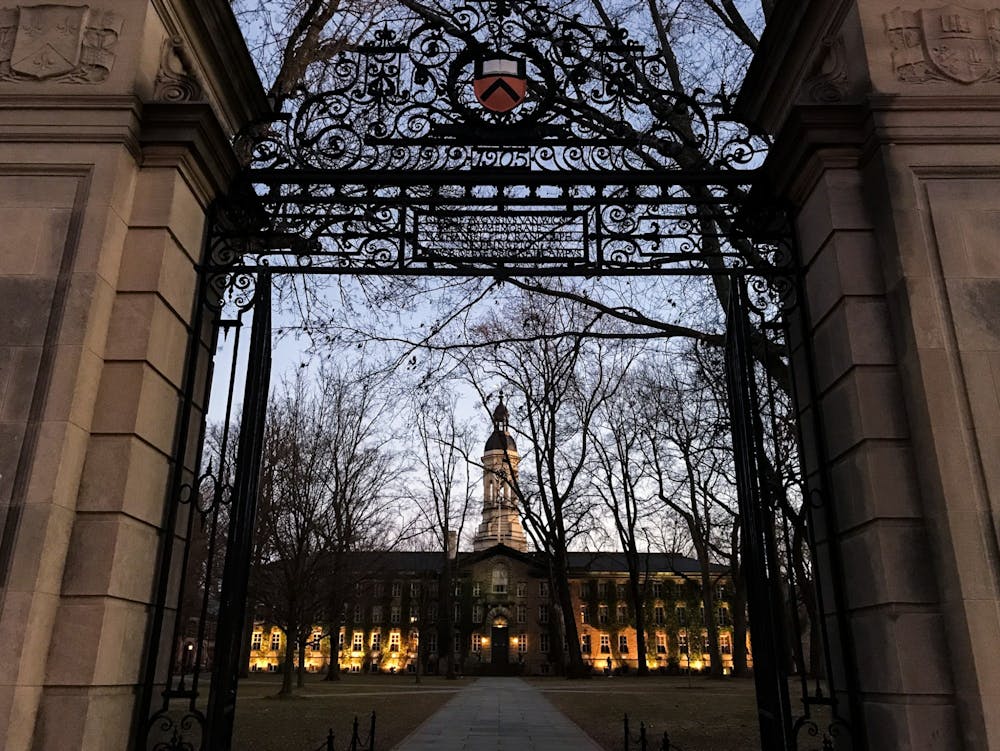The University prompted many questions last year when it decided not to release the statistics for the newly-admitted class of 2026. Instead, it released the statistics for students who matriculated this fall without some of the traditional information about average test scores or the acceptance rate. While not disclosing some indicators regarding selectivity of the University, the information disclosed made one thing clear: The undergraduate population is getting more racially diverse.
With 25 percent of the incoming class identifying as Asian American, nine percent identifying as Black or African American, eight percent identifying as Hispanic or Latino, seven percent identifying as multiracial, and less than one percent identifying as Native American, Native Hawaiian, or Pacific Islander, a significant percent of Princeton students are not white. Further, the administration has made welcome commitments to diversity in the student body and in the hiring, retention, and promotion of faculty and staff of color. This begs the question: Does the change in composition of our undergraduate body and some strides in diversifying the faculty and staff make Princeton any less of a Predominantly White Institution?
A Predominantly White Institution (PWI) is generally defined as a school where white people account for 50 percent or more of the student body. At Princeton, that is no longer the case. However, over the course of the 276 years of the University, the vast majority of student bodies have been composed of white men. The steps towards diversity on campus are a relatively new occurrence. In 1904, Woodrow Wilson said of Princeton that “[t]he whole temper and tradition of the place are such that no negro has ever applied for admission and it seems extremely unlikely that the question will ever assume a practical form.” In a 1940 poll in the Nassau Sovereign, 62.4 percent of the student body opposed allowing Black students to enroll.
While the undergraduate population of the University has been growing more diverse in the last few decades, the campus community is defined by so much more than just the current student population. The composition of Princeton’s faculty, the history of the institution, and the culture of the school contribute to the sense that Princeton not only has been, but most certainly still is a PWI.
We are lucky that so many of our professors are tremendously distinguished and well-respected within their fields and are often excellent classroom teachers, but we must also acknowledge that they hail largely from a similar, privileged background and that — despite recent hiring priorities — the faculty is still predominantly white.
This continues to contribute to a culture in which the definition of excellence often stems from a standard of what has been accepted and valued in white culture. For students from historically underrepresented backgrounds, even when those populations are now a majority of students on campus, that means taking on the obligations and challenges of code-switching and fitting in to appear professional under standards that are hundreds of years old and in which the University is steeped. Though African-American Vernacular English (AAVE) and different ways of presenting oneself are becoming more accepted in certain parts of U.S. culture and even on campus, there is still a long way to go in making progress on these issues.
Being a PWI captures not only the composition of the student body, but also the ethos of the community. Yet even the racial composition of the student body might soon revert back to the numerical definition of a PWI in the near future due to the current Supreme Court cases regarding race-conscious admissions.
While Princeton continues to grapple with its legacy and current state of faculty diversity, another issue risks creating immediate negative effects on the diversity of the Princeton community: the Supreme Court cases against race-conscious affirmative action. The racial composition of the Princeton community may be radically changed in the near future because of the cases that came before the Supreme Court this week.

The widely predicted outcome of the Supreme Court case on race-conscious admissions may mean that the composition of the student body could revert back to being predominantly white, which would likely create obstacles in the incremental progress that has been made to change these norms and standards. In this session of the Supreme Court, race-conscious admissions will likely be deemed unconstitutional by the largely conservative Court. While race-conscious policies could remain in place for a few more years, this year’s anticipated decision would reshape the way that colleges and universities could consider racial diversity in admitting their incoming classes. Many arguments exist as to why race should be considered in the admissions process, but particularly for communities like Princeton — which has committed to combating the history and legacy of white exclusivity on this campus — such tools for diversification have proven to be necessary to make progress in reimagining the culture of the University.
Whether Princeton will be able to continue considering racial background in the admissions process is now outside of the University’s control; however, the University’s commitment to diversification of its student body, faculty, staff, and cultural expectations ought to remain strong regardless of the Supreme Court’s decision. The University must ensure that regardless of the outcome of the case, there is a plan to continue to progress these goals.
The last 50 years of the University’s history reflect a marked and welcome shift by including so many people who have been historically excluded to be students, faculty, and staff here. It would be a grave mistake for Princeton to allow the anticipated Supreme Court decision to cement in place its cultural history as a PWI, and for the University to stop implementing and prioritizing policies that support and expand diversity on this campus.
Mohan Setty-Charity is a junior from Amherst, Mass., concentrating in economics. He can be reached at ms99@princeton.edu.









